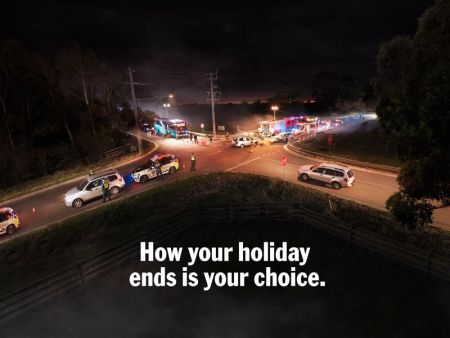Published date: 24 Mar 2018
Victorians are being urged to prioritise safety when buying a vehicle, after new data revealed more than two thirds of drivers and passengers killed on our roads last year were in a vehicle built more than 10 years ago.
The Transport Accident Commission research also revealed that in the past five years, Victorians were two times more likely to be killed if they were in a vehicle older than 10 years.
This is in part due to the fact safety features such as autonomous emergency braking (AEB), electronic stability control (ESC), and side curtain airbags are not as common on older cars.
TAC Lead Director Road Safety Samantha Cockfield said the data highlighted the importance of getting safer vehicles onto Victorian roads and reducing the average age of the state’s fleet.
“Our message to anyone buying a car – new or used – is to buy the safest car you can,” Ms Cockfield said.
“We know older vehicles are less likely to have some of these safety technologies, meaning they pose a higher risk of being involved in a crash and provide less protection for drivers and passengers.”
The average vehicle on Victoria’s roads is now close to 10 years old, meaning that millions of cars across the state are without potentially lifesaving technologies that have become common on modern vehicles.
There are around 4.6 million registered vehicles in Victoria and almost two million of those were built more than 10 years ago – more than 42 per cent.
“We all make mistakes and unexpected things happen on the road and, when they do, these safety technologies can be the difference between a fright and a fatality,” Ms Cockfield said.
“Safety doesn’t mean buying a new luxury car, there are plenty of safe options out there that suit all budgets.”
RACV is also calling on Victorians to put safety first when looking for a new or used car, urging people to choose vehicles with reverse AEB, which is designed to greatly reduce collisions between vehicles, pedestrians and cyclists.
“RACV encourages Victorians to choose vehicles fitted with reverse autonomous emergency braking technology when buying a new car,” RACV Vehicle Engineering Manager Michael Case said.
“Parking sensors and reversing cameras can greatly improve reversing visibility, and while a vehicle equipped with this significantly increases a car’s safety, driver diligence and supervision are still essential components of navigating driveways safely.”
Getting safer vehicles onto Victorian roads is also a key focus of the Victorian Government’s Towards Zero 2016-2020 road safety plan. The Safer Vehicles and Technology package will see all government vehicles required to be fitted with the best available safety features, and with a minimum five-star ANCAP safety rating.
TAC and VicRoads will also work to encourage parents, young people and private businesses to purchase vehicles with similar safety features.
For comprehensive information on how to purchase the safest car you can afford, visit www.howsafeisyourcar.com.au or www.howsafeisyourfirstcar.com.au
Contacts
Media queries only:
- Email: media@tac.vic.gov.au
- Nicolas McGay 0403 710 889
- Alex White 0419 529 505
- Megan Evans 0403 852 657
Please refer any other enquiries to:
- Online form
- Tel: 1300 654 329
- Email: info@tac.vic.gov.au



